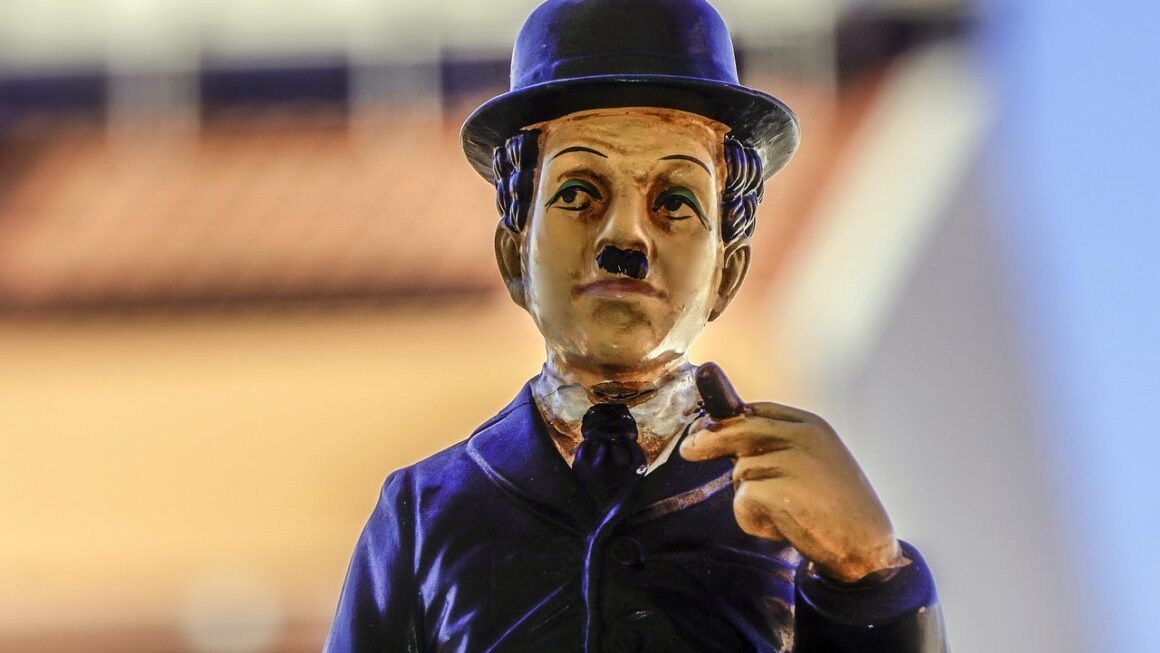Comedy. It’s more than just jokes and punchlines; it’s a powerful force that connects us, challenges us, and helps us navigate the complexities of life. From stand-up stages to sitcom screens, comedy permeates our culture, offering respite, insight, and perhaps most importantly, a shared experience of laughter. But what exactly is comedy, how does it work, and why is it so essential? Let’s dive in and explore the art and science behind the chuckles.
The Anatomy of a Joke: Deconstructing Humor
The Setup: Building Anticipation
The setup is the foundation upon which any good joke is built. Its primary purpose is to establish a scenario, introduce characters, and create expectations in the audience’s mind. A well-crafted setup is clear, concise, and informative, providing just enough detail to prepare the listener for the punchline. Think of it as laying the groundwork for the surprise that’s about to come.
- Example: “I used to hate facial hair…” (This setup creates an expectation, perhaps that the speaker still hates facial hair or will offer a reason why they did.)
The Punchline: Delivering the Unexpected
The punchline is the climax of the joke, the moment when the carefully constructed setup is subverted, leading to laughter. A successful punchline is unexpected, surprising, and often relies on wordplay, irony, or a sudden shift in perspective. It’s the “aha!” moment that catches the listener off guard and triggers a humorous reaction.
- Example: “…but then it grew on me.” (This punchline uses wordplay, transforming the initial statement into an admission of liking facial hair, creating a humorous contradiction.)
The Role of Timing and Delivery
Even the best joke can fall flat without proper timing and delivery. Pacing, pauses, and tone of voice are crucial elements that can amplify the humor and impact of the punchline. A comedian’s ability to control these aspects can mean the difference between a roaring crowd and awkward silence.
- Timing Tip: A slight pause before the punchline can build anticipation and heighten the impact.
- Delivery Tip: Varying your vocal tone and adding physical gestures can enhance the comedic effect.
Types of Comedy: A Diverse Landscape
Stand-Up Comedy: The Art of Solo Performance
Stand-up comedy is a direct and intimate form of humor, where a comedian connects with a live audience through storytelling, observations, and witty remarks. It demands improvisation, quick thinking, and the ability to read the room. Successful stand-up comedians often develop a unique persona and comedic voice that resonates with their target audience.
- Key Elements:
Personal anecdotes
Observational humor
Improvisation
Audience interaction
Sitcoms: Humor in a Fictional World
Sitcoms (situation comedies) are television shows that revolve around recurring characters and humorous situations. They often employ a mix of physical comedy, witty dialogue, and relatable scenarios to entertain viewers. Successful sitcoms create memorable characters and storylines that keep audiences coming back for more.
- Popular Sitcom Tropes:
The awkward family dynamic
The wacky neighbor
The will-they-won’t-they relationship
Misunderstandings and mishaps
Sketch Comedy: Short-Form Humor and Character Work
Sketch comedy is a format that features a series of short, comedic scenes or “sketches.” These sketches often involve absurd situations, satirical commentary, and exaggerated characters. Sketch comedy groups like Saturday Night Live and Monty Python have popularized this form, showcasing diverse comedic styles and pushing the boundaries of humor.
- Characteristics of Effective Sketch Comedy:
Strong character work
Fast-paced and energetic
Surprising plot twists
Sharp satirical wit
The Psychology of Laughter: Why We Find Things Funny
The Relief Theory: Releasing Tension
The relief theory suggests that laughter is a release of nervous energy and tension. When we encounter something unexpected or unsettling, laughter allows us to discharge the pent-up anxiety and return to a state of equilibrium. This theory helps explain why we often laugh at taboo subjects or situations that would otherwise cause stress.
- Example: Gallows humor, where jokes are made about death or tragedy, can be seen as a way to cope with difficult emotions.
The Superiority Theory: Feeling Smarter or Better
The superiority theory posits that we laugh at the misfortunes or shortcomings of others because it makes us feel superior. When we witness someone else’s mistake or embarrassment, it reinforces our own sense of competence and intelligence. This theory isn’t about malice; it’s about a subtle boost to our self-esteem.
- Example: Slapstick comedy, where characters frequently experience physical mishaps, often relies on the superiority theory for its humor.
The Incongruity Theory: Recognizing the Absurd
The incongruity theory states that humor arises from the recognition of something unexpected or out of place. When we encounter a situation that violates our expectations or defies logic, we experience a sense of cognitive dissonance that is resolved through laughter. This theory emphasizes the importance of surprise and absurdity in humor.
- Example: A joke that relies on a pun or wordplay creates an incongruity between the literal meaning of the words and their intended humorous effect.
The Power of Comedy: More Than Just Laughs
Social Commentary: Holding a Mirror to Society
Comedy can be a powerful tool for social commentary, allowing comedians to address sensitive issues, challenge authority, and provoke critical thinking. By using humor, they can make complex topics more accessible and engage audiences in meaningful conversations.
- Examples:
Satirical news shows like The Daily Show use humor to critique political events and media coverage.
Stand-up comedians often tackle social issues like racism, sexism, and inequality in their routines.
Therapeutic Benefits: Healing Through Humor
Laughter has been shown to have numerous therapeutic benefits, including reducing stress, boosting the immune system, and improving mood. Comedy can provide a much-needed escape from the pressures of daily life and offer a sense of connection and shared experience.
- Benefits of Laughter:
Reduces stress hormones like cortisol
Releases endorphins, which have mood-boosting effects
Improves cardiovascular health
Strengthens social bonds
Building Connection: Shared Laughter
Comedy brings people together through shared laughter. When we laugh together, we experience a sense of connection and camaraderie that transcends cultural and social barriers. Comedy creates a shared experience that strengthens relationships and fosters a sense of community.
- Examples:
Attending a comedy show with friends or family.
Watching a funny movie together.
* Sharing jokes and memes online.
Conclusion
Comedy is a complex and multifaceted art form that serves far more than just entertainment. It’s a vital part of human culture, providing social commentary, therapeutic benefits, and a powerful means of connection. From the meticulously crafted setup and punchline of a joke to the diverse styles of stand-up, sitcoms, and sketch comedy, the world of humor offers something for everyone. Understanding the psychology behind laughter allows us to appreciate the profound impact comedy has on our lives and the world around us. So, the next time you find yourself laughing, take a moment to consider the intricate forces at play and appreciate the power of a well-delivered joke.



